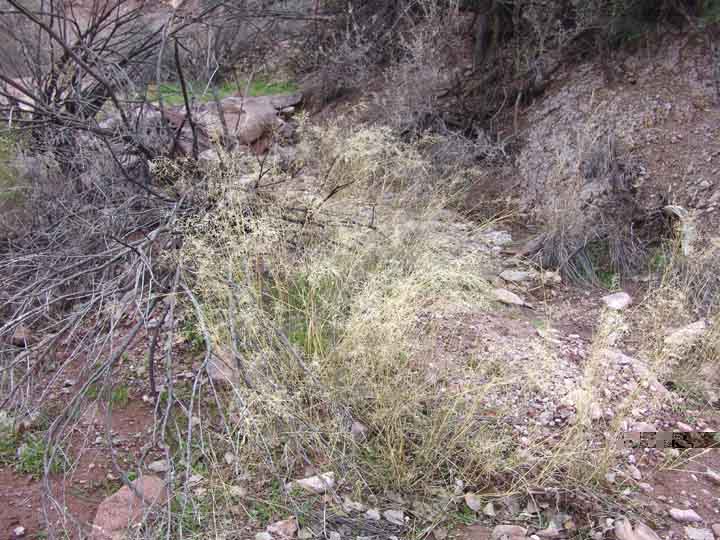
Lehmann lovegrass (Eragrostis lehmanniana)
Introduced from its native South Africa in the 1930s as a means of restoring depleted rangelands, this warm-season perennial grass prefers sandy soils and pioneers disturbed sites. It has competitive advantage over native grasses both because of its early production of abundant seeds and its positive response to fire and grazing. It is also easy to confuse with native grasses.
We have seen it in the upper part of Sierra Blanca Canyon Wash, as shown here, below, near our water gap in September 2004: (note: colors of this image have been intensified to emphasize the visible architecture of the inflorescence against the background rocks):

The structure of the inflorescence may be confused with other Lovegrass (Eragrostis) species, in particular Plains Lovegrass (Eragrostis intermedia). The distinction is that in the Plains species, the length of the pedicel -- the stalk to which each seed is attached -- is much longer than the seed itself, while in Lehmann's lovegrass, the pedicel is generally shorter than the length of the seed. This is evident in the images of Lehmann's Lovegrass shown below, taken from the same stand of plants: (Click on each image to enlarge it.)
We have also seen Lehmann's Lovegrass in Lower Cottonwood Seep. At first it was just a few plants (in 2000), but by January 2005 it had expanded its presence considerably.Here below is a new clump of it, one of several some 50 yards downstream from the single location where we saw it 5 years ago.:


